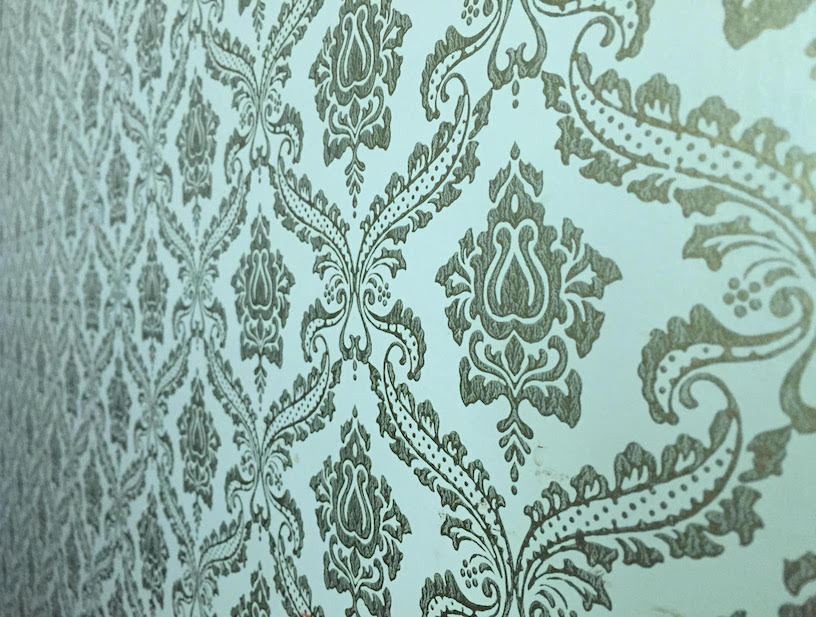I almost got to live in a mansion once. My then-husband and I had spotted a 2000-square-foot apartment in the “for rent” ads. The rent was so low, it seemed too good to be true…and as we found out later, it was.
But we didn’t know that yet, and as we pulled in to the driveway, we were dazzled by the sheer grandeur of the place and its location overlooking the Genesee River far below. And we both gasped as we took in the dimensions of the living room. In truth, it was a ballroom. Cinderella could have danced across those acres of parquet flooring, pausing to rest on one of the window seats. The tall windows were framed by floor-length curtains of deep red velvet, faded but still plush. The effect was sumptuous. And the billiards room—for one simply must have a billiards room—featured custom-crafted stained-glass windows. Each panel depicted a favorite pastime of the famous industrialist who built the place.
But there was a third room that left a lasting impression on me that day, and that was the kitchen. I was unmoved by the appliances and the other practical amenities. They were ordinary. What transfixed me was the wallpaper.
The awesome power of environment
Imagine an explosion of bright yellow and white flowers, each the size of a dinner plate, shining against a background of glossy green foil. The effect was overwhelming. The landlord told us an elderly Italian lady had had this paper installed. No doubt, she had distinctive taste.
But here’s what hit me, standing in the kitchen: the room, which was actually quite large, felt small. And I felt small, too.
I’ve thought about that wallpaper many times in the thirty years since, realizing what a perfect metaphor it is for my mental environment. My “mental wallpaper”—the attitudes I’m holding towards myself and others— can make me and my world, feel spacious and safe—or cramped and overwhelming.
My inner wallpaper has no giant daisies. It is more understated. But it has no less effect on me for being more subtle. In fact, its subtlety makes it trickier to see. This is true for many sensitive people(HSPs). Even hanging unobtrusively in the background of our sensitive minds, our mental wallpaper can dominate, discourage, and overwhelm us, because as we are environmentally susceptible. This means we are affected to a greater degree by our environment than non-sensitive people are. And because our internal environment goes wherever we go, it affects everything we do.
Spotting the effects of ugly wallpaper
The effects of ugly inner wallpaper can show up subtly and gradually, sapping your energy. Imagine you are holding a glass of clear water, and you add a single droplet of black ink. The change is barely perceptible. But as you add more drops, the water gets darker and murkier. Long-term, low-grade wallpaper exposure feels like that.
On the other hand, you may suddenly feel like the wind got knocked out of you, and you aren’t sure how it happened. A fleeting thought can act like a supersonic plane, which streaks by too quickly to be seen, but leaves behind a deafening boom. If you suddenly feel exhausted or get an urge to escape to your favorite distractions, you may have caught a fleeting glimpse of some harsh mental graffiti.
Why it’s challenging to see your own thoughts
It is tricky to be objective about your own thought processes. We are all subject to the effect known as “observer drift”, the “gradual step-by-step alterations over time in the observations and documenting of observations made by a specific viewer.”
To clarify, you are the “specific viewer” mentioned in this definition. And as you attempt to observe yourself over time, you lose objectivity. You stop seeing things. Or you fill in things that aren’t there.
There’s a popular fable about a boiling frog. It postulates that if you gradually heat a beaker of water with a frog in it, the frog will allow itself to be boiled to death because it can’t sense the gradual change. If this were true, it would be a gruesome example of amphibian observer drift. As it turns out, this frog story is a myth: experiments have confirmed that the frog will leap out of the beaker the moment you give it a chance.
But how about you? I invite you to pause and ask yourself this question: “If someone else were dropped into my brain, would they shriek and leap out?”
If you answered “Yes,” or “Maybe,” or “Sometimes,” then it’s time to face the truth. You are letting yourself be boiled alive. You may have grown numb to your ugly mental wallpaper. You may be tolerating self-criticism, self-shaming, and self-blaming. And you may be doing all this because you have never known any other way of being. Whatever the case may be, however, only you can change this treatment of yourself. Only you can fire your mental interior decorator.
4 ways to change your mental wallpaper
Objectivity increases with distance, and it’s hard to get distance from your own thoughts. But with an effort you can facilitate your ability to see and read your mental wallpaper. Here are four strategies:
1—Write down your thoughts. Write down exactly what you are telling yourself, word for word. Describe in detail any images or memories you see in your mind’s eye. Take a hard look at what you’ve written.
2—Use Focusing skills to talk to any critical voices you identify. Find out what they are trying to protect you from.
3—Play the game of “queen for a day”: say to yourself, “If I had an unlimited treasury, wise men, and the power of command, and used all these resources so that all were well, healed, and wonderful, what would things be like?” Use your imagination to flesh out this better world, then compare how you feel now to how you felt before. The contrast in these two felt senses creates awareness and objectivity.
4—Meditate: when you meditate, the resulting mental spaciousness helps you perceive your mental wallpaper more clearly and easily. Witnessing your thoughts reduces their “stickiness.” That is, you can detach yourself from your thoughts and get a bit of distance and objectivity.
Still feeling low?
There are many possible causes for feeling low. If you habitually move too fast for your HSP body; if you are critical of yourself for being sensitive: if you need to adopt better HSP self-care; or or if you set goals that stress rather than inspire you —you will end up feeling discouraged and deflated.
But remember that your mental wallpaper affects everything you do. So if you feel low, take a look at your HSP interior decoration and make sure it is spacious, wise, and beautiful.
Photo ©2018 Emily Agnew




















There would be a lot of leaping from my brain! This is a great piece Emily, and I very much like the use of wallpaper to describe the issue. Memorable and useful. Thanks!
You are welcome Karen. It took me a minute to figure out what you meant about “leaping from your brain”…and then I got it…the frog:). I get what you are saying about wanting to leap out!–and we all have our ways of trying to “leap out”. Or check out. Or numb out. Or I do, anyway. But I too like the idea of the wallpaper as it gives me the option of reading and redecorating, instead of just putting up with my own internal bad taste!:)
This is a beautiful image of the wallpaper of my mind. I don’t know what kind of learning it is…but images help me grasp concepts much better than just a factual explanation. I’m thinking to print out this article and carry it with me to refer to throughout my day so I can step back and say before going into a situation…what kind of wallpaper for my mind would I like to enjoy in this moment I am about to engage in? Am I letting other people put up my wallpaper? My first thoughts about the boiling frog story was why do I allow others to boil me? Their negative words, unkind thoughts, impolite actions are all a form of boiling…and if it happens gradually, it can take a while before I personally realize these are toxic situations or toxic people for me. As an HSP I think with my heart first …..and this is often the reason why I put up with people boiling me….is there an article that helps us HSP empaths to think with our minds first so as to avoid being boiled by others?
HI S, you asked, “As an HSP I think with my heart first …..and this is often the reason why I put up with people boiling me….is there an article that helps us HSP empaths to think with our minds first so as to avoid being boiled by others?” I think it is not your mind, but your body that will help you here. Just stay closely in touch with how you feel in a conversation, and listen to your body. Don’t stay longer than you are willing. Other people can only “boil” us if we let them.
Well, just over a year since my first comment and I have an interesting personal discovery. You write ‘you may have grown numb to your ugly mental wall paper’ and you ask ‘who is your mental interior decorator’?
Well, what I am about to say isn’t meant to criticize or judge anyone, it is just a fact that took place. My parents separated when I was 18. Another woman moved in with my father at that time. This woman, whom I never called my stepmother and whom I never lived with, managed to criticize me behind my father’s back for many many years. She just passed away a couple of weeks ago. The evening I found this out I felt a weight off my being, off my heart. I also had the thought of how could I have allowed someone to control and deplete my energy for almost 40 years and not realize the intensity of what was happening? I have been in talk therapy for over a year now and quite regularly the topic of feeling a deep root of rejection within me that I couldn’t escape or overcome has arisen. Upon the passing of this women I’d say a sizeable percentage, if not all, of this root of rejection has disappeared. It makes sense in hindsight….another woman taking my mother’s place ( who is still alive) and this other woman taking away the attention from my father that I needed.
I’m working hard at installing my own healthy mind and body wallpaper. The trick I suppose to is remove the old wallpaper before installing the new wallpaper eh?
Yes, you are right! We need to remove the old wallpaper…which you do by becoming aware of it and looking into any beliefs “written” on it.
I’m hearing how it’s a weight off of your heart to be free of that fear of being criticized by your stepmother, that lived in you for so long. That’s wonderful.